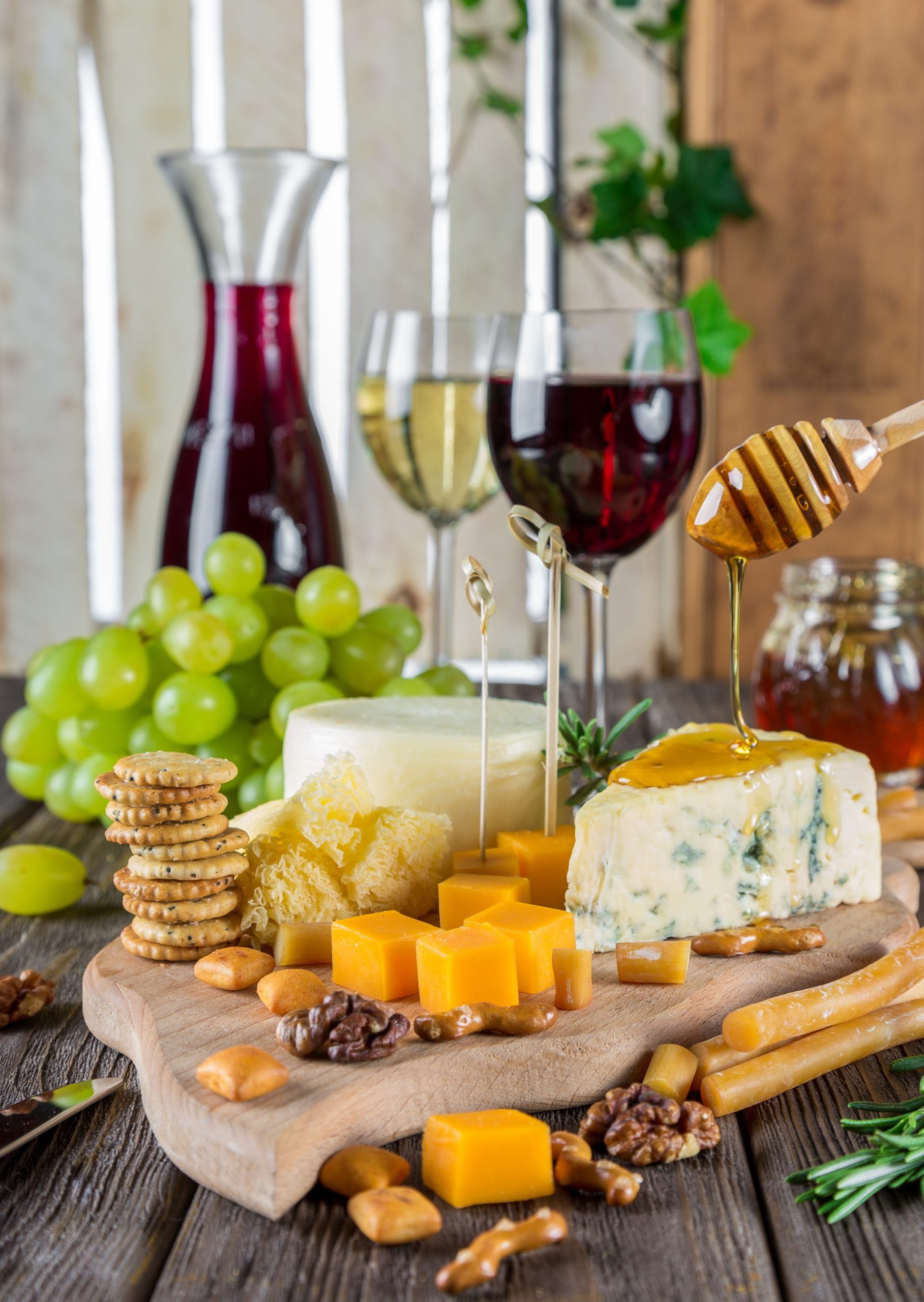It’s no secret: Americans love wine and cheese. Every bar, pub, winery, and restaurant seems to be adding charcuterie boards to their menus. The problem is, heading out every night to satiate your wine and cheese cravings can get expensive.
With a few tips and tricks to perfect your palate, you can save some of your hard-earned cheddar by making a cheese board at home. So, whether you’re throwing a party, looking for a fun date night appetizer, or preparing some finger food for book club, we’re here to outline five essential charcuterie best practices.
Pro tip: Erie, Pennsylvania, is surrounded by thousands of acres of grape fields and is home to dozens of wineries. If you’re looking for a comprehensive sampling of what this lakeside city has to offer, pick up tickets to the region’s premier wine event, Wine on the Lake.
1. Be Bold
Show off a bold red with an equally bold cheese. Matching intensities will help each sip or bite shine without one overwhelming the other. As a general rule of thumb, you should pair wines with a 14.5% alcohol by volume (ABV) with an equally robust cheese. For example, Arundel’s “Handsome” Cabernet Sauvignon would pair well with a hearty gouda or cheddar.
For wines with a 12% ABV or less, pair with a more delicate variety of cheese. For instance, a Pinot Noir from 21 Brix could go swimmingly with subtle gruyere. You’ll discover the flavors of sweet cherries, cocoa, and oak.
2. Find the Middle Ground
Serving several wine options or perhaps going to a BYOB? A nutty, firm cheese is adaptable and sure to marry well with reds and whites alike. Examples are gruyere, swiss, gouda, manchego, or comte cheese.
While the pairing might not be perfect, it won’t be so jarring either. If you’re unsure of what kind of wine to serve or bring to a party, aim for semi-sweet/semi-dry selection. Consider picking up Penn Shore’s Dry Concord, which sports strong concord grape overtones without the extra sweetness.
3. Shop Small and Local
By and large, regional wines pair well with regional cheeses because of their shared growing conditions and climate. Essentially, when cows experience the same seasons and growing conditions the grapes do, the flavors pair well.
Interestingly, a recent study by the University of California found that wine has distinct biological qualities that indicate where it’s from and even the year it was made. These indicators come from the types and amount of fungi and bacteria found in the grape.
4. Bubble Up
Your favorite champagne or sparkling wines such as Brut and Cava have the right acidity and sweetness to cut through the buttery richness of a creamy cheese.
Bloomy rind cheeses are barely aged, so their mellow taste and soft texture is an excellent bubbly partner. brie and camembert are smart choices when you’re sipping on some bubbly.
Triple cream cheeses with at least 75 percent butterfat also make great pairing partners for sparkling wines. The fat content makes the sugars in the wine pop, highlighting the notes of fruit and citrus. For example, the sparkling peach mist from Winery at Wilcox would be the perfect match for a creamy goat cheese.
5. Experiment with Flavor Enhancers
Charcuterie boards aren’t just delicious because of the cheese options. Restaurants often incorporate dried fruit, nuts, cured meats, jams, and spreads. If you’re putting a cheese board together and feel like there’s simply something missing, see what you have in the refrigerator and pantry. Easy, on-hand, flavor enhancers include:
|
|
While experts have pairing recommendations, personal flavor and texture preference are just as important to enhancing the tasting experience. If you don’t enjoy the taste or texture of something, skip it!
A trick with adding fruit as a flavor enhancer is to pair red wines with red to dark red-colored fruits such as raspberry, cherry, and blackberry. White wines, like Presque Isle Wine Cellars’ Pinot Grigio, pair well with “white fruits” such as lemon, lime, pineapple, peach, pear, or apple.
Keep in mind the regional pairing aspect for flavor enhancers as well. Regional wines, cheeses, breads, and fruits all play well together. Erie boasts a plethora of farmer’s markets that offer seasonal fruits and pick-your-own opportunities.
Serving wine and cheese at home
Perhaps now you’re ready to show off your wine and cheese pairing knowledge to your friends and family. Follow these four tips for your first foray into a pairing party:
- Chill your white wines a few hours before guests arrive. Whites should be served at 49-55 degrees. Reds should be served at 62-68 degrees, so don’t fret over the temperature of reds unless it’s a hot summer day.
- Just like red is best at room temperature, so is cheese. Get your charcuterie board out of the fridge twenty minutes to one hour before serving. If the cheese looks sweaty, it’s too warm.
- Aim for five different varieties of cheese (½ lbs. each) to feature, a account for about half a bottle of wine to be consumed per person. If you are serving other foods, such as fruit (that you picked yourself, of course!), vegetables, or small sandwiches, you won’t need as much cheese.
- To pre-cut or not to pre-cut is a personal preference. The cheese will dry out along the exposed edges but offers convenience to guests.
